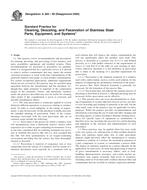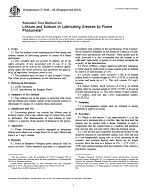1.1 This practice covers procedures for using sonic drilling methods in the conducting of geoenvironmental exploration for site characterization and in the installation of subsurface monitoring devices.
1.2 The use of the sonic drilling method for geoenvironmental exploration and monitoring-device installation may often involve preliminary site research and safety planning, administration, and documentation. This guide does not purport to specifically address site exploration planning and site safety.
1.3 Soil or Rock samples collected by sonic methods are classed as group A or group B in accordance with Practices D 4220. Other sampling methods may be used in conjunction with the sonic method to collect samples classed as group C and Group D.
1.4 The values stated in SI units are to be regarded as standard. The inch-pound units given in parentheses are for information only.
1.5 This practice offers a set of instructions for performing one or more specific operations. It is a description of the present state-of-the-art practice of sonic drilling. It does not recommend this method as a specific course of action. This document cannot replace education or experience and should be used in conjunction with professional judgment. Not all aspects of this practice may be applicable in all circumstances. This ASTM standard is not intended to represent or replace the standard of care by which the adequacy of a given professional service must be judged, nor should this document be applied without consideration of a project’s many unique aspects. The word “Standard” in the title of this document means only that the document has been approved through the ASTM consensus process.
1.6 This practice does not purport to comprehensively address all the methods and the issues associated with drilling practices. Users should seek qualified professionals for decisions as to the proper equipment and methods that would be most successful for their site investigation. Other methods may be available for drilling and sampling of soil, and qualified professionals should have the flexibility to exercise judgment as to possible alternatives not covered in this practice. This practice is current at the time of issue, but new alternative methods may become available prior to revisions, therefore, users should consult manufacturers or sonic drilling services providers prior to specifying program requirements.
1.7 This practice does not purport to address all the safety concerns, if any, associated with its use and may involve use of hazardous materials, equipment, and operations. It is the responsibility of the user of this standard to establish appropriate safety and health practices and determine the applicability of regulatory requirements prior to use. For good safety practice, consult applicable OSHA regulations and drilling safety guides.
Product Details
- Published:
- 03/01/2004
- Number of Pages:
- 12
- File Size:
- 1 file , 250 KB


